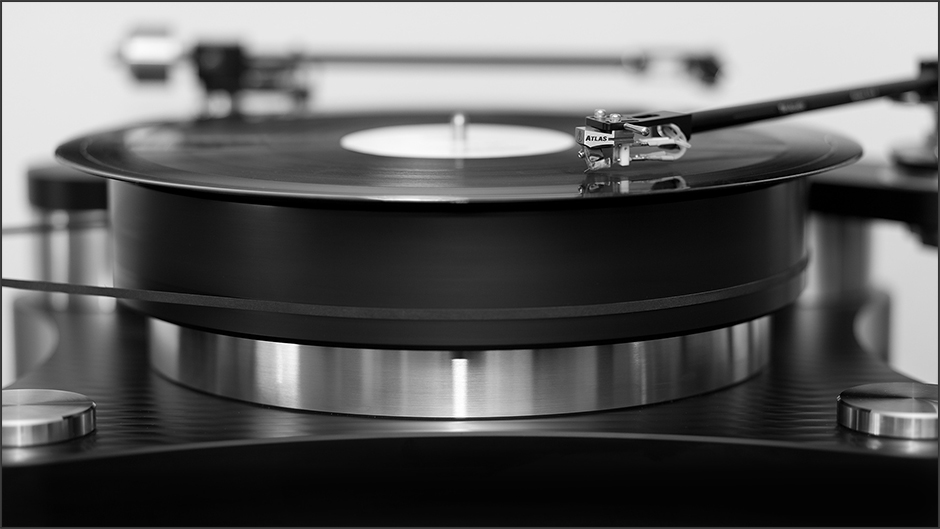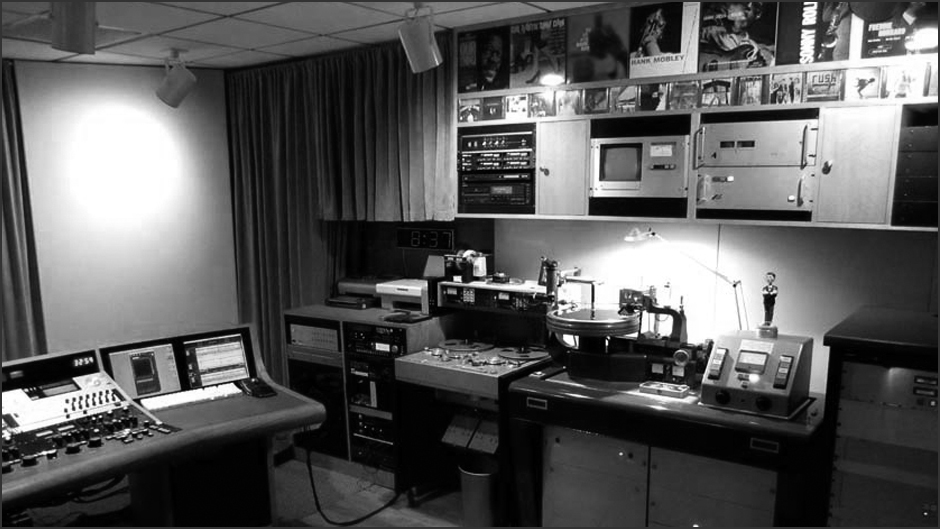The mono vs. stereo question confronts anyone dealing with reissues of Rudy Van Gelder's Blue Note masters.
If the goal is getting to the essence of the music, we discovered that you cannot take a dogmatic view of this issue. Rudy Van Gelder first began recording Blue Note sessions in stereo in March of 1957. From then until an October 30, 1958 Art Blakey session, Rudy simultaneously ran both mono and stereo session tapes. After that session, Rudy abandoned the practice of running both mono and stereo session tapes and recorded strictly in stereo. The evidence is there for anyone to see who examines the original master tapes. When Kevin Gray, Ron Rambach and I began our first mastering session with our first six Blue Note masters we couldn't help noticing the clearly marked (by Alfred Lion) notations indicating "monaural masters made 50/50 from stereo master" on the master tape boxes.
Quite frankly, our expectation going into this project was that both mono and stereo masters existed and that the mono masters would probably be preferred. After all, in the LP collector market it is the mono Blue Notes that are most prized. Kevin, Ron and I put up the first tape (Horace Parlan's great "Speakin' My Piece" session) with an open mind. To our collective surprise, when listening to the master tape, the stereo was greatly preferred to the (summed) mono. There was no doubt that the stereo presentation much more clearly presented the quintet performing these six great tunes that July day in 1960 at Rudy Van Gelder's Englewood Cliffs studio. The stereo presentation revealed more air, more detail and more sheer life than the mono. The mono playback was a wonderful remembrance of the old LP we all knew and loved. The stereo playback from the original masters was eerie. It was like going back in time to that day in Rudy's studio. Quite simply, the stereo masters revealed more of what it was like to be there that day.
Listening to tape after tape during that first two-day mastering session revealed the same thing. And every one of those master tape boxes had the same hand written notation "mono master made from 50/50 stereo." For me, and for everyone involved, the great RVG mono/stereo controversy had been solved once and for all.
But then Ron Rambach said, "what about all of those Blue Note collectors (like me and Joe) who have always cherished the mono LPs and WANT the mono LPs?" As good as the mono originals are, after the October 30, 1958 session at Van Gelder Studios the mono masters were made by folding down the original stereo master. Once we heard the actual stereo masters, the decision was made: when a stereo Blue Note master exists, we will use that stereo master to cut our lacquers for this series.
Whichever way you choose to listen to these great Blue Note 45RPM LPs, we hope you enjoy them as much as we do.
Why? Because...Music Matters!

We use 180 gram pressings. Why not 200 gram?
We use 180 gram pressings for the simple reason that we believe 180 gram weight is more than sufficient to provide a near perfect pressing. Forcing presses that were designed for 150 gram and 180 gram weight to press 200 gram vinyl results in a multitude of additional problems including warpage. A check of audiophile vinyl chat rooms reveals many dissatisfied buyers of 200 gram vinyl. When Music Matters asked our friends at Record Technology Inc. for their recommendation to achieve the highest possible quality pressings their answer was unequivocal......
go with 180 gram!

Upgrading Connections at COHEARENT!
It goes without saying that there are many controversies and debates in the perfectionist audio/LP collector market.
But one area of near universal agreement is the quality of mastering that emerges from Kevin Gray's custom-built mastering studio in North Hills, CA. Kevin has provided many of the best sounding new and reissued albums on LP during the last 5 or 6 years working out of his studio.
When Ron and I agreed that Kevin was the Engineer we wanted to do the transfers for our Music Matters Blue Note reissue program I began to think about the connectivity issue at Kevin's studio. As VP of product development at AudioQuest since 1983, the knowledge that cables make a difference is hardly new to me!
An inspection of the facility revealed adequate wiring (mostly from Canare I believe) but hardly the stuff of audiophile dreams. As great as the output of Grays Equipment has been, I knew we could push the performance of this system significantly higher by improving the wiring of both the line level connections as well as the many AC cables in the chain. Kevin quickly agreed to give it a try.
The improvement we heard (by comparing before and after acetates) was substantial. It was clear that we had made a significant improvement to the facility. Through my many years at AQ (Bill Low and I shipped out of his garage back when I started at AQ in 1983) I have become quite familiar with the kind of musically important improvements that can be made when the cabling is made to be more of what it should be.....a sonically "invisible" conduit to the source.
After hearing the difference the AudioQuest cable made in his mastering set up, Kevin Gray had this to say: "I found the change with the AudioQuest cable to be subtle at first. It didn't really change tonality like many other cables I have auditioned. What it DID do is allow you to hear further INTO the music. Subtle directional and spatial cues became clearer and more defined without brightening or hardening the sound. I really appreciate this. So many cables I have heard tend to harden or soften one area of the frequency spectrum and everyone goes 'Ooh, ahh!'. I don't want that. I just want definition. AudioQuest offers the finest sense of that I have ever heard."
The sonic results of this improvement are being heard not only on the Music Matters series of Blue Note reissues, but everything coming out of Cohearent Studio. Ron and I naturally decided not to make the improved wire a "Music Matters only" feature. After all, we are music lovers first and foremost.
We think you will be quite pleased with the improvement we have managed to squeeze out of an already state of the art mastering facility.
With the music in mind...
Joe and Ron
Music Matters Ltd.